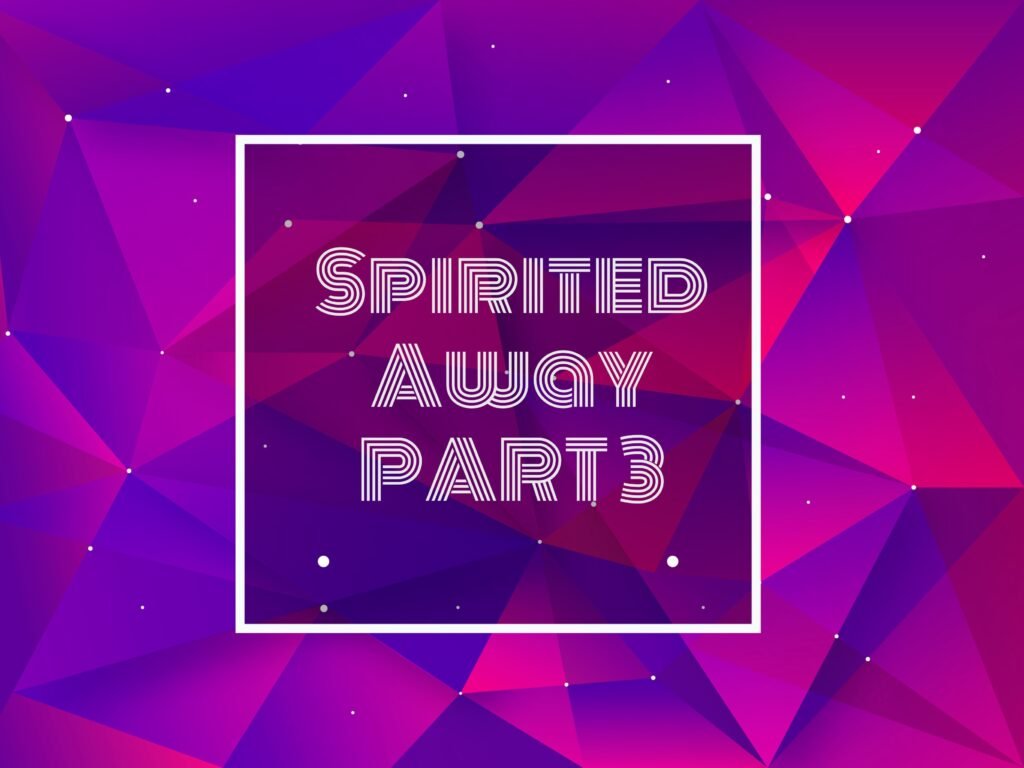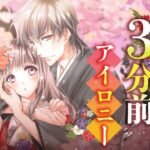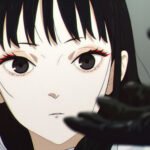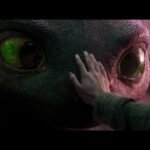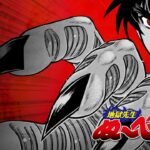Welcome to Part 3 of our deep-dive series on Spirited Away! In Part 1, we covered the film’s core storyline and characters, offering a spoiler-free primer. Part 2 delved into its intricate background and hidden lore.
Now, we tackle the grand finale: thirteen enigmas that anime commentator Okada Toshio once spotlighted in Japan—mysteries that have kept fans debating for decades. From the curious frostiness of Chihiro’s mother to the possibility that this beloved anime is, at heart, a subtle horror story, these questions unveil Spirited Away’s most overlooked depths.
Spoiler Alert: We’ll dissect major plot points and hidden subtext. If you haven’t watched Spirited Away or wish to avoid spoilers, bookmark this article for later. If you’re eager to explore the film’s lesser-known facets, read on!
Mystery #1: A Horror Tale Beneath the Fantasy?
Many see Spirited Away as a whimsical adventure, yet the opening scenes could belong in a horror film. Chihiro’s family veers off course into a derelict area, encountering a broken torii gate, abandoned shrines, and a dark tunnel.
- Ominous Atmosphere
The sudden appearance of spectral silhouettes, along with the uncanny speed at which dusk descends, recalls the tension of classic horror. - Parents as Victims
Chihiro’s mother and father gorge on mysterious food and transform into pigs—a fate typical of “curse” scenarios in horror lore.
Despite its bright visuals, the early portion of Spirited Away pulses with dread, supporting the theory that Miyazaki purposely layered horror elements into the film’s initial arc.
Mystery #2: Why Is Chihiro’s Mother So Distant?
Viewers often question Chihiro’s mother’s brusque, dismissive tone. She rarely gives Chihiro much warmth and seems more concerned with following her husband than comforting her anxious daughter.
Proposed Explanation
Okada Toshio’s commentary suggests a secret tragedy: the loss of an older son. The mother, burdened by unspoken trauma, struggles to bond emotionally with Chihiro. Though the film never states this outright, it would clarify why she appears especially aloof whenever Chihiro seeks support.
Mystery #3: Haku—Secret Brother or Simple River God?
According to the official story, Haku is a spirit of the Kohaku River who helps Chihiro in the spirit world. But some fans speculate he represents Chihiro’s deceased older brother, who once saved her from drowning.
- Cryptic Dialogue: Haku claims he has forgotten his own name but still knows Chihiro’s from her childhood.
- Flashback Clues: In a key scene, an unseen child’s hand reaches into the water to rescue a drowning figure—possibly indicating that Chihiro’s sibling lost his life saving her, transforming into a semi-divine entity connected to the river.
This theory gives extra emotional weight to Haku and underlines the film’s recurring motif of selfless devotion.
Mystery #4: Is Aburaya a Brothel—or Something Else?
Early interviews hinted that Aburaya, the bathhouse in Spirited Away, could be read as a red-light district, with “yuna” historically referencing bathhouse workers who sometimes engaged in sex work. Producer Toshio Suzuki even compared Chihiro’s growth to that of a shy girl forced to learn social skills in a hostess bar.
However, many believe this was more a promotional hook than an intended narrative core. Some see Aburaya instead as a metaphor for consumer culture, or even as a stand-in for Studio Ghibli—where animators work ceaselessly to meet demanding “gods” (the audience). While the “brothel” idea persists online, it’s not universally accepted as the film’s ultimate metaphor.
Mystery #5: Aburaya as Studio Ghibli?
Rather than focusing on potential ties to the sex industry, another prevalent interpretation views Aburaya as a reflection of Studio Ghibli itself:
- Workforce Parallels
The bathhouse teems with young female workers, mirroring a period when Ghibli employed many junior animators (often women) after a major staff shift. - A Rigorous System
Like Ghibli’s intense production environment, Aburaya demands relentless labor under the watchful eye of a formidable boss—Yubaba—who can be seen as an allegory for either Miyazaki or producer Suzuki. - Financial Pressures
Aburaya’s entire purpose is to serve paying guests—similar to how a studio aims to captivate audiences and ensure box office success.
This perspective reframes Spirited Away as Miyazaki’s introspective commentary on the tension between artistic passion and commercial imperatives.
Mystery #6: Warped Time in the Spirit Realm
One of Spirited Away’s defining quirks is how rapidly day turns into night. The route back to Chihiro’s world submerges beneath floodwaters with disorienting speed.
- Possible 10:1 Ratio
Some theorists propose that a few hours in Yubaba’s domain equate to weeks outside, evidenced by dust on the family car when they return. - Folkloric Roots
Japanese myths frequently toy with time distortions in sacred or haunted places. Miyazaki, drawing on that tradition, ensures that once Chihiro steps into the spirit domain, normal chronology no longer applies.
Mystery #7: Chihiro’s Father—Motives Left Unclear
Chihiro’s father, though a central figure, never reveals why the family is really moving. He brags about his four-wheel drive and dismisses all superstitions, leading the trio into the abandoned park without hesitation.
- Unspoken Emotional Strain
Some fans theorize the move aims to help Chihiro’s mother cope with lingering grief. The father’s cheerful facade might mask deeper worries. - Greed or Innocent Confidence?
Whether out of arrogance or optimism, his behavior highlights how ignoring cautionary signs can lead to downfall—a recurring theme in Spirited Away.
Mystery #8: Humans and Gods—A Fragile Border
The realm in Spirited Away brims with kami (“gods” or spirits) from Japanese folklore. Often invisible by day, they fully manifest after sundown, suggesting a boundary governed by belief and ritual.
- Polluted Gods
The infamous Stink Spirit arrives caked in sludge, symbolizing how industrial waste can corrupt even divine entities—reflecting Miyazaki’s environmental concerns. - Partial Deities
Haku’s ability to appear in daylight implies he’s not a complete spirit. This dual nature underscores Spirited Away’s notion that life and afterlife coexist in shifting layers.
Mystery #9: The Train Scene—Miyazawa’s Night on the Galactic Railroad?
One of the film’s standout sequences is the haunting train ride across a flooded landscape. Many see parallels with Kenji Miyazawa’s Night on the Galactic Railroad, a story of otherworldly travel that explores love, loss, and spiritual insight.
- Visual Similarities
A solitary house in a vast water expanse recalls key imagery from anime adaptations of Miyazawa’s novel. - Journey Between Worlds
In Spirited Away, Chihiro’s train ride to Zeniba’s cottage has a melancholy, dreamlike quality, mirroring the reflective tone of Galactic Railroad.
Mystery #10: Kaonashi—A Metaphor for Modern Emptiness?
Kaonashi (No-Face) frequently ranks among the most recognizable figures in Studio Ghibli’s library, yet his exact nature is hotly debated.
- Desperate for Acceptance
Offering gold and attention, Kaonashi tries to buy affection from Aburaya’s workers. When spurned by Chihiro, he spirals into a destructive frenzy—reflecting how reliance on material wealth can ravage one’s identity. - Reclaiming Humanity
Only by rejecting Kaonashi’s golden bribes does Chihiro help him shed his monstrous facade, suggesting the need to restore genuine emotional connection over shallow transaction.
Mystery #11: Yubaba vs. Zeniba—Which Witch Is Which?
Though twins, Yubaba and Zeniba exhibit wildly different personas. Yubaba is imposing, quick-tempered, and fixated on her bathhouse, while Zeniba appears grandmotherly and kind. But some observers caution that Zeniba’s warmth may be as formidable as Yubaba’s severity—just expressed differently.
- Dual Sides of Authority
Yubaba wields power in plain sight; Zeniba’s approach is more subtle. She can dispense curses and forgiveness with equal ease. - Mirror Opposites
Their contrasting nature can also hint at Miyazaki’s recurring theme of balance: where one sister governs the “public” side of the realm, the other influences matters behind the scenes.
Mystery #12: “Don’t Look Back”—Timeless Myth Meets Growth
As Chihiro leaves the spirit world, Haku warns her not to look back until she’s fully across the tunnel—evoking myths like Orpheus, who lost Eurydice by turning around too soon.
- Symbol of Transition
Chihiro must mentally and physically move forward, shedding her ties to the bathhouse. - Growing Up
The instruction channels a common Ghibli motif: to forge ahead without clinging to regrets. Chihiro’s transformation from timid girl to confident individual hinges on her resolve to keep pressing on.
Mystery #13: Is There a Hidden Happy Ending?
Longstanding rumors in Japan reference an alleged “lost ending,” where Chihiro momentarily remembers Haku thanks to a glowing hair tie. Officially, the film ends with her parents none the wiser as they exit the tunnel.
Likely Explanation
- False Memories
Fans might recall promotional images or misinterpret trailer clips. - Miyazaki’s Optimistic Touch
The real story ends quietly, yet thematically suggests hope: Chihiro’s growth ensures she and Haku won’t be forgotten, even if she can’t articulate the memory.
For many, Spirited Away is about embracing inner change. In that sense, it’s already a “happy” ending—Chihiro emerges braver, ready to face life’s next challenge.
These thirteen mysteries showcase Spirited Away’s extraordinary depth, highlighting how Hayao Miyazaki’s masterpiece transcends the boundaries of a typical family film. Beneath its vibrant surface, the story hints at darker undertones, hidden grief, and unbreakable bonds between lost siblings. Whether you’re convinced it’s a horror-infused coming-of-age journey or a love letter to Studio Ghibli’s pressures, Spirited Away endures because it leaves ample room for personal interpretation.
We hope this deep dive has offered new angles—maybe you’ll notice a subtle flashback or a curious gesture the next time you watch. Spirited Away continues to captivate audiences precisely because it refuses to reveal all its secrets at once. Perhaps that’s the film’s greatest magic: it invites us to keep searching for meaning, even long after we’ve stepped back into our own everyday world.
Explore more articles about Spirited Away! Thank you!

